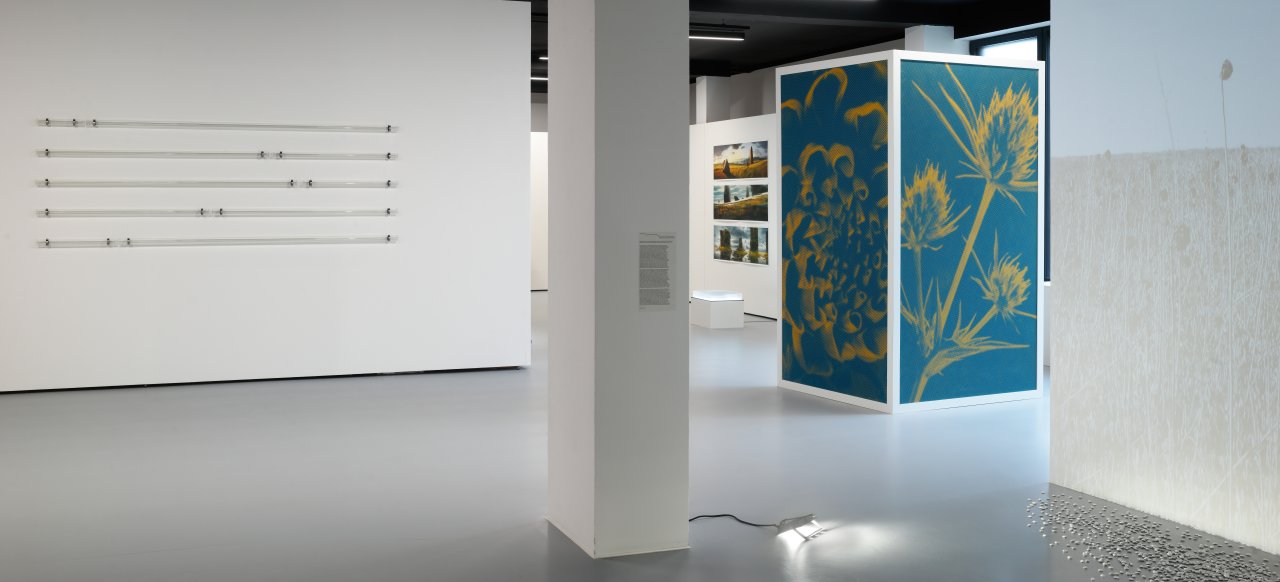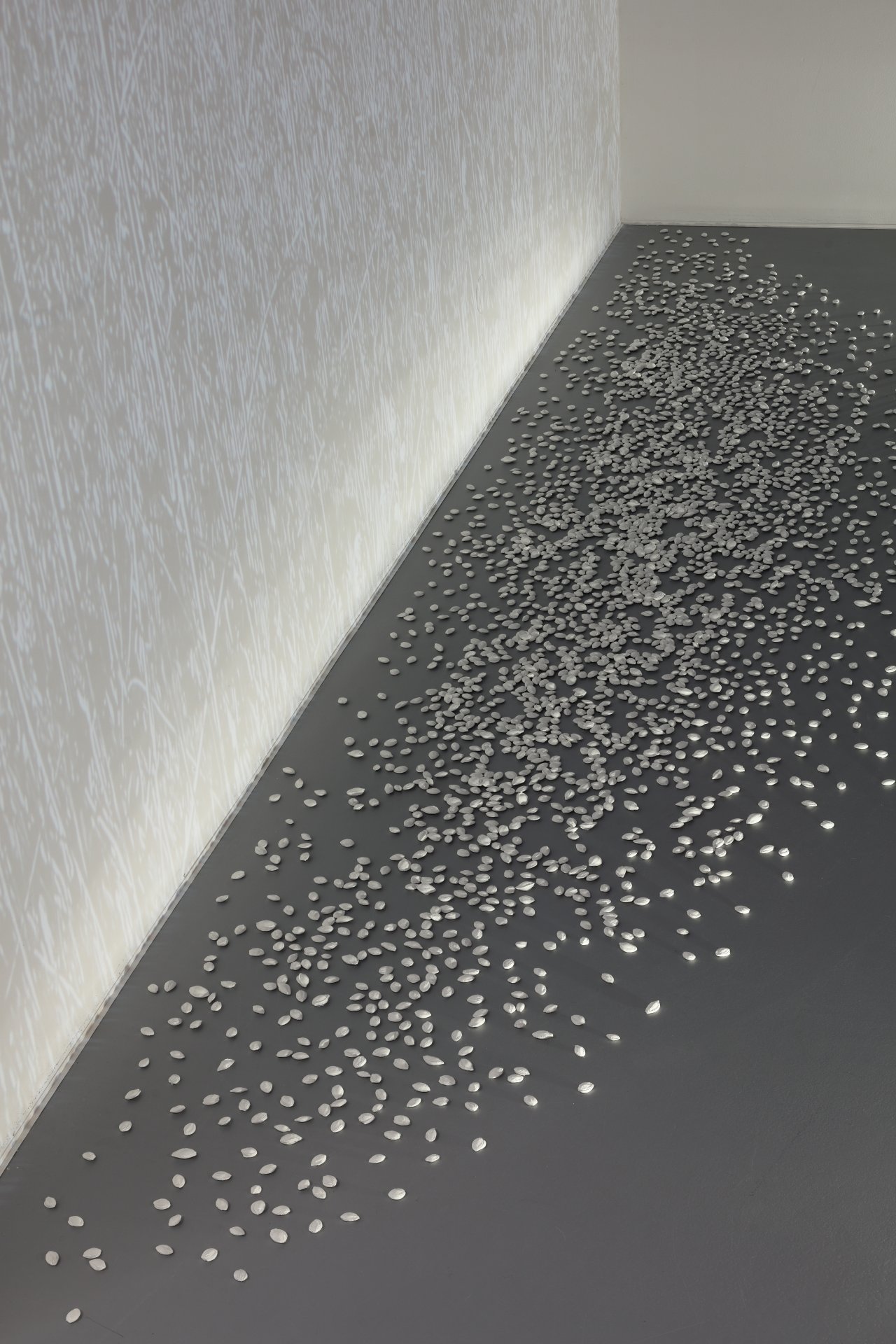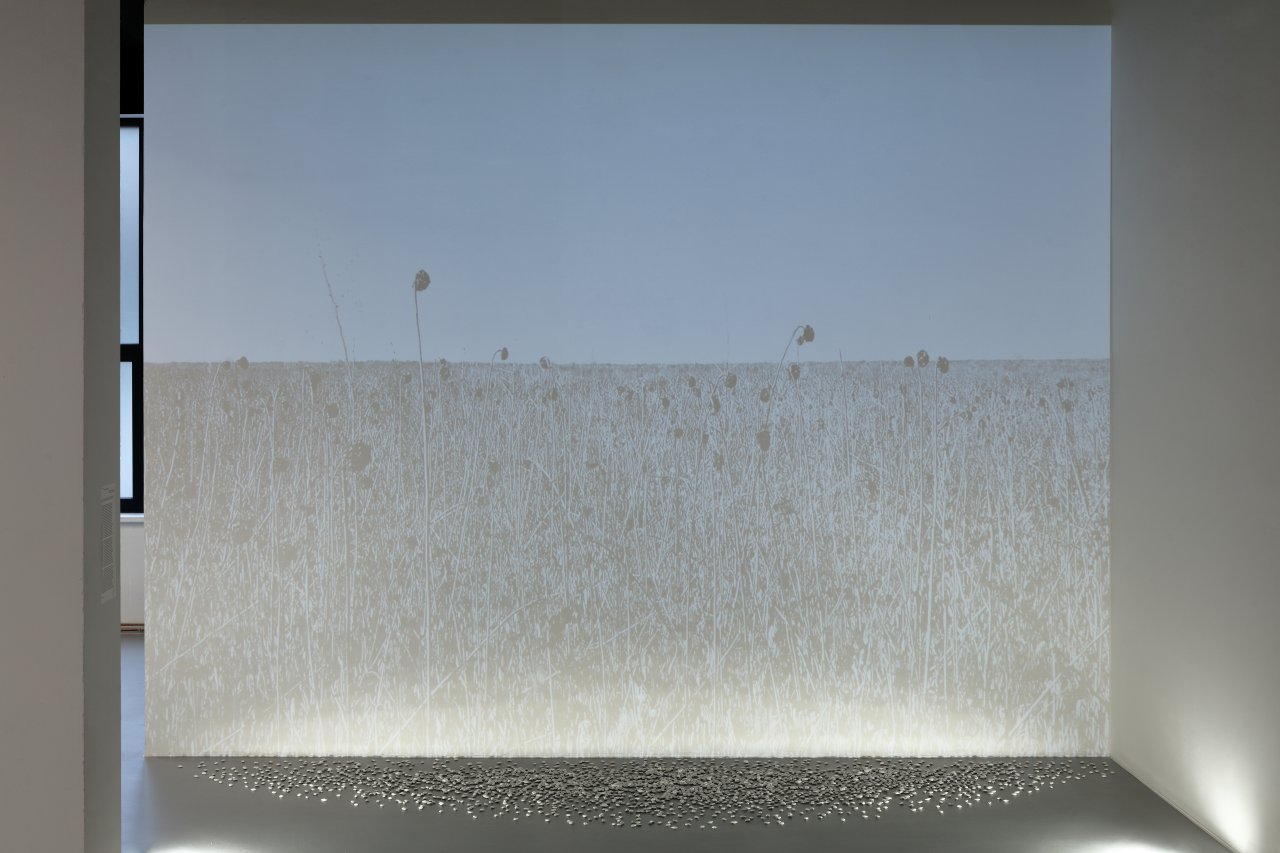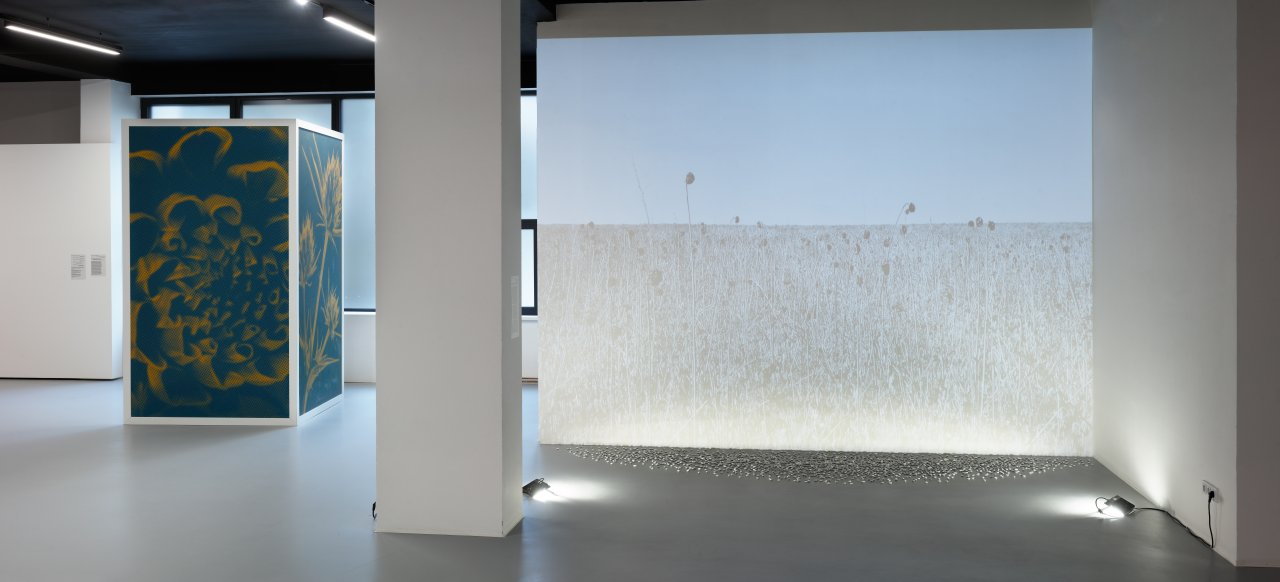A garden that didn’t happen 2023
video, stones, site-specific installation
My grandmother Vira and grandfather Serhiy have a village house with a garden near Shestakove in the Chuhuiv district, 30 km east of Kharkiv, Ukraine. They have been taking care of it for more than 12 years. Right outside their front door, across the road, is a large field that belongs to a local agricultural cooperative. On this field, the cooperative farmers grew wheat, sunflowers and corn and always left it fallow for a year to let the soil rest and gain strength. On the 24 February 2022 the Russian invasion broke out in full force and the area where my grandparents’ village home is located was quickly occupied. My grandmother and grandfather couldn’t go to their house or garden, and the farmers couldn’t get into the fields to clear them of the remnants of last year’s planting (they were sunflowers) and to sow them for the new season. And although the area was liberated by the Ukrainian army in May of that year, it was only in the summer of 2023 that people were able to return to it, because, as everywhere else Russia has militarily entered, every square kilometre of land has been mined. My grandparents have started working on their garden again, although the two years they were unable to look after it have taken a heavy toll on it and it will certainly not be as flourishing and fruitful as it was before the invasion. This September, the field was cleared of the remains of dry and dead sunflowers and one of the tractors hit a mine in the process. Its driver was badly injured but fortunately survived. The field has remained empty ever since. For the time being, it is impossible to know how much of it is still mined and to estimate how soon it will be possible to re-seed the field.
In 2019, I started collecting apricot and plum pits. I painted them white, not knowing why. But I was sure I would figure it out soon enough. Two years later, I decided I needed lots and lots more pits. I told myself that the concept of my future work would finally be revealed to me, as I felt it was somewhere very close. Together with my mother, we asked our friends and acquaintances, my grandparents and their friends and acquaintances, to give us the pits of apricots and plums left over after making pies, pastries and jams. There was a bountiful fruit harvest in our region that year, so most of the pits came from local gardens. In total, we managed to collect 2880 apricot and plum pits during that last pre-war summer in Ukraine. The pits were left in my apartment in Saltivka, one of the most intensively bombed neighborhoods in the northeast of Kharkov. In more than two years they had lost their fertility, but they had also been forgotten as material for art. It wasn’t until a few weeks before I was due to leave for a residency as part of the Gardening of Soul: In Five Chapters project in Ústí nad Labem that I rediscovered them on my balcony during a visit to Kharkiv in October 2023.
And finally, after all these years, I came up with a clear concept for an art project about apricot and plum pits. At that time I couldn’t pack them in my bag because they wouldn’t let me through customs at the EU border. My mother suggested that she send me all the pits as a parcel by post so that I could pick them up in Austria, where I now live, and bring them to Ústí nad Labem. She sent the package by the Ukrainian service “Nova Poshta”. On the night of 22 October 2023, the main terminal of this company in the Kharkiv region, where all the parcels were piled up before being sent to their destinations, was hit by a Russian rocket, causing a huge fire, 8 dead and many injured. My shipment, containing 2880 apricot and plum pits, left the terminal just an hour before the tragedy. Here at the Ústí nad Labem House of Arts, in an exhibition called Gardening of Soul, these pits painted with white paint represent the ghosts of apricots and plums that will never be able to grow again. And the projection depicting the field in front of my grandparents’ house in the village represents the ghost of land that will not be able to become a garden for a long time to come.





